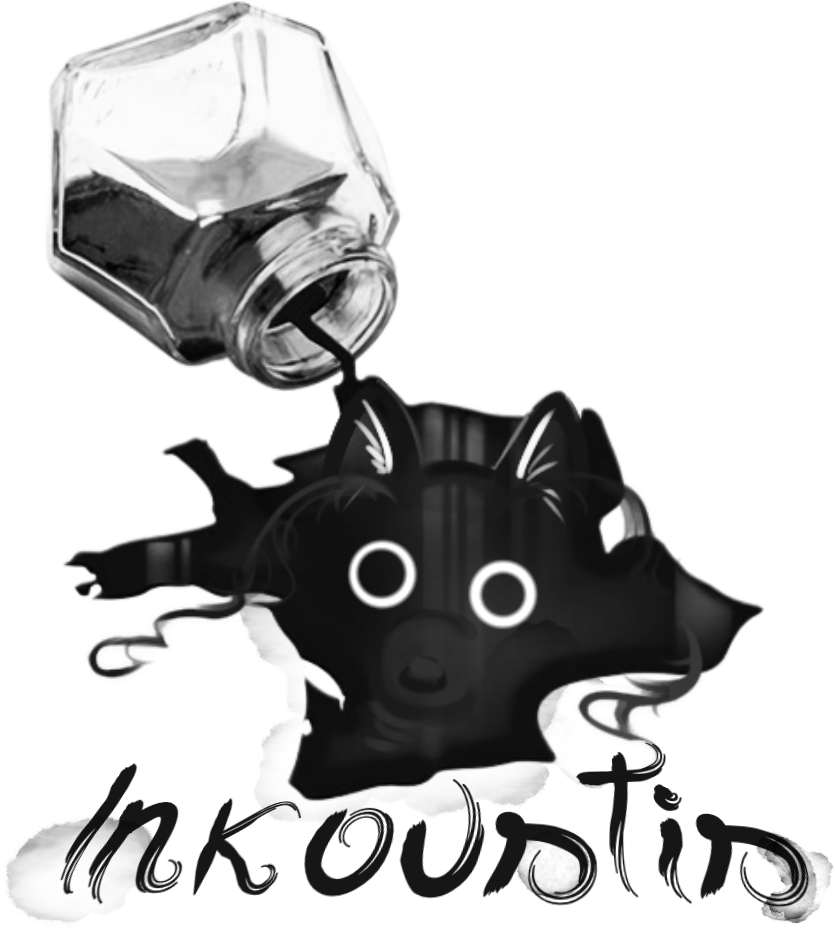Profile
Inkoustis
closed species by shiroukami
about
Important Notes
Inkoustis are known to be a dangerous, ink-based species within Faewilde.
According to legend, the God of Art, Creativity, Curiosity and Imagination once owned a familiar.
A young, inky beast that was full of chaos and energy, it managed to escape from its home and find its way outside of the demi-planes, causing mischief all around Faewilde.
The God made many attempts to recapture their familiar in an act to try and clean up its mess, each ending in failure for the beast was quite stubborn and adaptive.
Out of an instinctual need to stay in this world, the desperate familiar split itself into many, allowing it to roam all corners of the map and eat anything it could to evolve and, with it, take on new shapes.
Present day, the rapid reproduction of these new beings have since evolved into what we now know as Inkoustis.
header
Quisque mauris diam, rhoncus ut sem et, euismod varius massa. Quisque ut molestie sem. Aliquam vitae risus vitae nunc ultrices auctor. Suspendisse vel mi sit amet diam laoreet bibendum vitae eu ipsum. Sed augue tortor, iaculis sit amet est sit amet, vulputate venenatis tortor. Curabitur quis lectus sem. In sit amet bibendum neque. In vehicula nunc non felis auctor consectetur vitae non nunc. Etiam cursus lorem vel est aliquam lobortis. Aliquam erat volutpat. Suspendisse aliquet sodales tempor.
General Traits & Anatomy
Here is a description of the basic anatomy of Inkoustis. These traits apply to all Inkoustis and do not have rarity!
General Traits & Abilities
- Nib like claws
- Inkoustis are able to secrete venomous ink through claws and fangs
- All fluids are made of poisonous ink
- Victims tend to leave ominous works of art behind
- Dark tongues come in some variations ( think chow chows)
- Large sharp canines and an unhinged jaw
- Prone to Ink drool
- Wispy brow-plumes/headwires that they can raise and lower on a whim. [ Ref link ]
Patterning
Inkoustis are initially born with translucent fur that appears white to the human eye. In this early “canvas” state, they are highly impressionable. Their fur patterns begin to build as they eat and continue to evolve as they grow.
Their fur patterns and coloring are affected by their main diet much like flamingos, especially during their younger stages.
Imagery can also be found and obtained through various ways such as:
- Through what they eat
- Life changing events and stress make certain areas more prone to patterning and others less prone. Much like a stress zone chart: [ link ]
- Environment/Camouflaging
Mutations to their ink like fluorescent or metallic qualities are also obtained through their main diet. Such mutations are classified to be uncommon or rare traits; others may be exlusive to a specific breed group!.
Early Life/Reproduction
Young and newborns are often seen to be called kin, pups or hatchlings. The term tends to differentiate from group to group.
Regardless of gender, They are capable of taking the “mother” role and generating eggs when stimulated properly to do so. Decision on who takes on the “mother” role is often made between mates during their mating season.
The mother can decide on two ways of raising their eggs:
- They can choose to let the egg develop inside their body; they will receive nutrients and oxygen through an umbilical cord much like mammals.
- Or they can choose to lay their eggs and will have to incubate them as birds might.
Mothers commonly only carry one child at a time, however, there have been some rare cases of them successfully bearing at most three.
Mating
As far as mating goes, we refer to this species as being socially monogamous but genetically promiscuous. This means mated pairs will typically stay together for life, but extra pair copulations are not unusual, at least in some populations.
Breeds / Breed groups
The species is separated by breed group! There are many variations but due to their nature, it is easy to distinguish them by region/environment. Each breed group has their own unique behaviors and traits!
Click the images below to read more about each breed group.
text 1
text 2
text 3






Comments